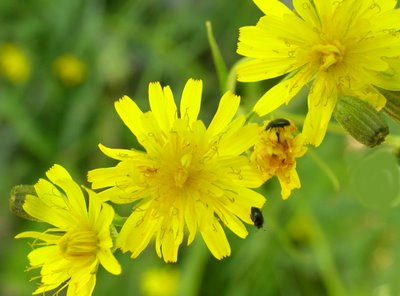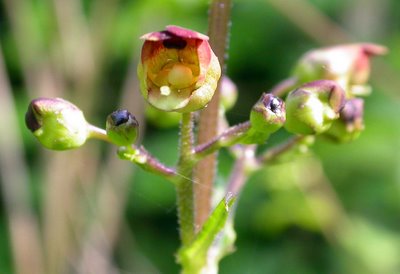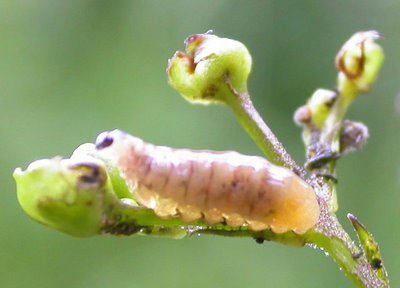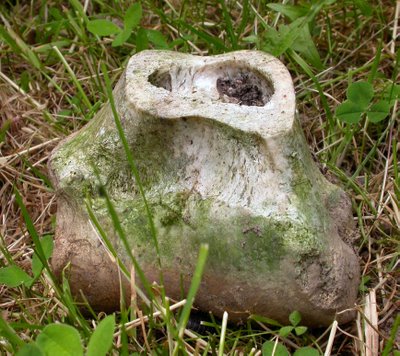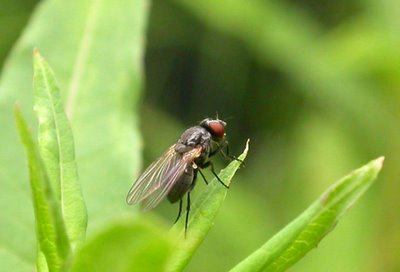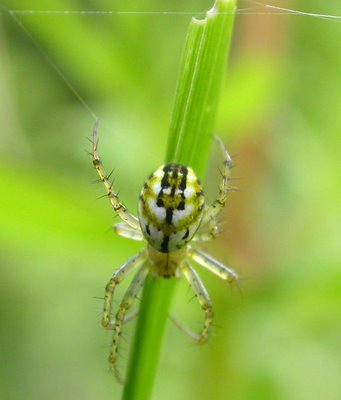
This insect is one of the most intrigueing in M3 as it moves about en masse from place to place and occasionally disappears altogether. In the warmer months these ants are often busy under Gingerbread Refuge, a piece of wood at the base of the north wall of logs. Once I saw them winding their way in a column up the dead stalk of a marsh thistle plant like pilgrims ascending the outside stairway of the Malwiyya, the spiral minaret of the Great Mosque of Samarra.
In winter they go to ground somewhere and emerge during the first warmer days of spring. Recently they abandoned Gingerbread Refuge, but a few days ago they started coming back and today I found them with the brood of larvae (see photo above) which, I suspect, must have been brought up from secret chambers somewhere underground to be in a warmer place so as to complete their development more quickly.
As with the slugs, it is difficult to understand quite what these and the other ants live on. Whatever it is there must be plenty of it, but all I ever see is the stray worker lugging some bit of detritus towards the nest.
These red ants are often accompanied by tiny, white springtails called
Cyphoderus albinus that rush around among the workers like an animated pieces of scurf. When the ants go
Cyphoderus goes too like a camp follower.
These ants put up with a lot from me as I turn over the various refuges under which they shelter, but they are great survivors and I admire their industry and tenacity and their long season of complex activity.



